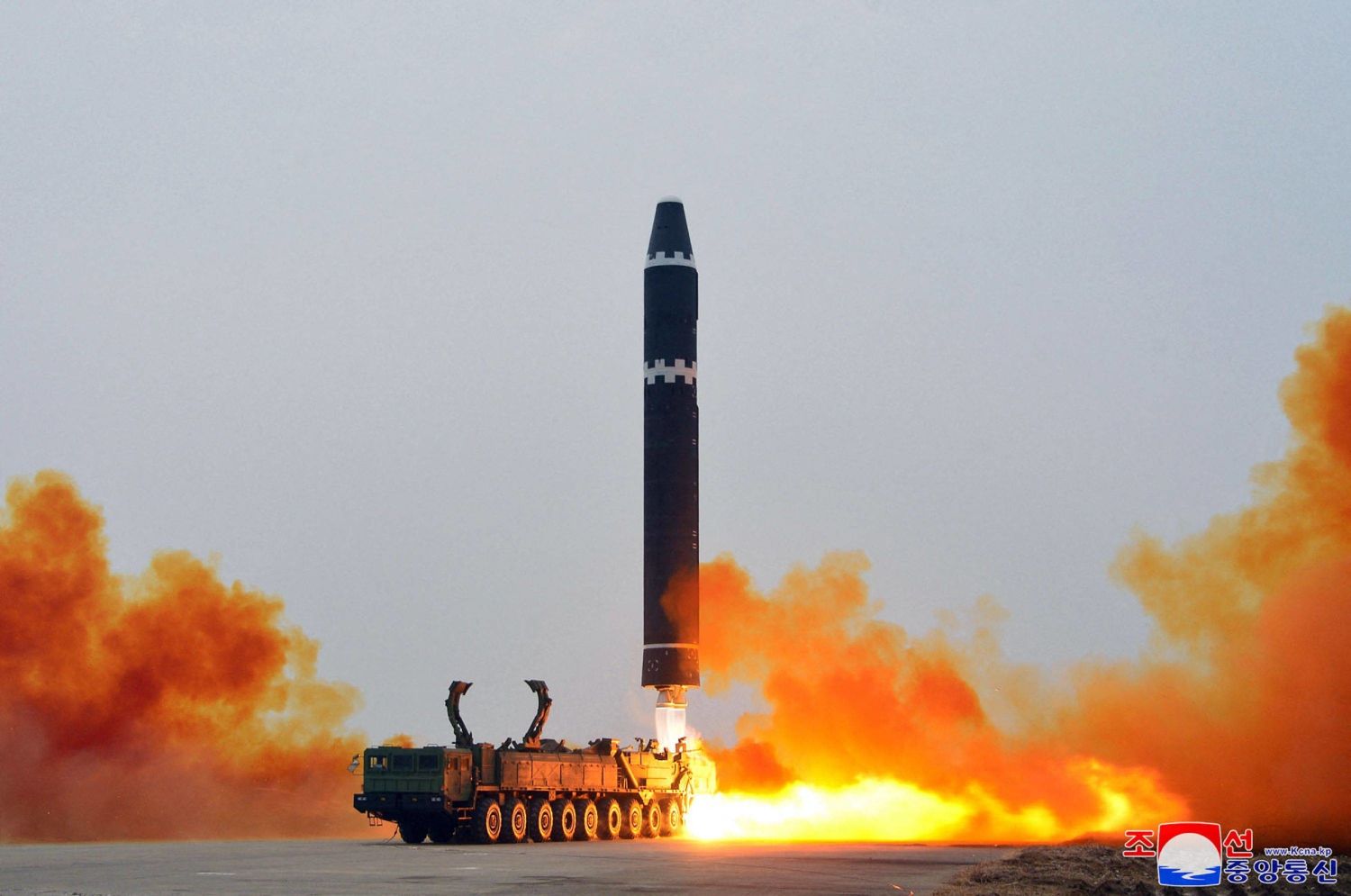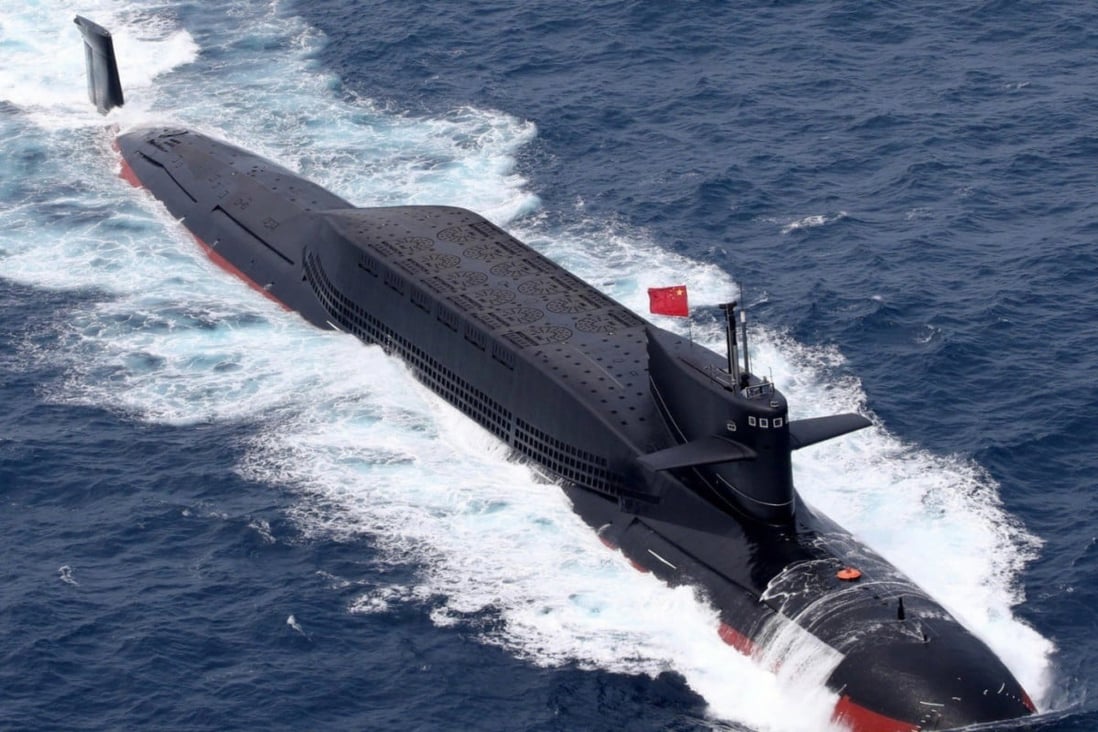A new study by Chinese scientists has made startling revelations about North Korea’s missile program and capability, claiming that an ICBM fired by Pyongyang could reach the central United States in just over half an hour.
Ukraine ‘Shoots Down’ Made In China Drone With AK-47 Assault Rifle; Report Says Bomb Was 3D Printed
Beijing-based defense scientists claim to have simulated a North Korean intercontinental ballistic missile attack on the continental United States.
The team opined that if the American missile defense network failed to intercept it, the North Korean missile could strike the center US in 1,997 seconds, or almost 33 minutes, Hong Kong-based South China Morning Post reported.
Similar studies by Chinese researchers had typically avoided mentioning specific nations or regions, especially when the results were publicized.
This report came when North Korea launched another Intercontinental Ballistic Missile (ICBM), its fourth in a week, amid joint naval drills underway between the United States and South Korea. The missile traveled nearly 1,000 kilometers before landing in the waters of Japan.
According to Japan’s defense ministry, it was an ICBM that soared over 6,000 kilometers for around 70 minutes. After the launch, South Korean President Yoon Suk Yeol gave his nation’s military the go-ahead to carry out the scheduled joint US drills.
He asserted that Pyongyang would pay for its “reckless provocations.”

Less than a month ago, North Korea launched an ICBM, which prompted a UN emergency meeting and G7 criticism. ICBMs are particularly of concern because of their long range.
According to experts, such missiles launched from North Korea may be able to reach the US mainland. This precedent becomes even more perilous as it is believed that Pyongyang has developed ICBMs capable of carrying multiple warheads.
Against that backdrop, the Chinese study assumes more significance as the tensions between Pyongyang and Washington have risen. Although the US Indo-Pacific Command said that these launches did not threaten the US immediately, North Korea has made several statements covertly threatening the country.
China’s Study On North Korean ICBM Is Alarming
The study simulates the launch of North Korea’s Hwasong-15 missile, which was first fired in 2017.
It is a two-stage, nuclear-capable missile with an effective range of 13,000 kilometers, according to the Chinese team led by Tang Yuyan from the Beijing Institute of Electronic System Engineering, a leading research center in China’s aerospace and defense sector.
According to research by Tang and her coworkers published on February 15 in the Chinese-language journal Modern Defense Technology, a Hwasong-15 missile was launched from Sunchon, a city in South Pyongan province in central North Korea.
Columbia, in the central US state of Missouri, was the intended target of the simulation. The Chinese team estimated an alert would take around 20 seconds to reach the US missile defense command.
Within 11 minutes, the first interceptor missiles would launch from Alaska’s Fort Greely. If they were unsuccessful, a second wave of interceptors would be launched from California’s Vandenberg Space Force Base.
The simulation, however, revealed that despite its great power, the US missile defense network has holes in its “kill chain” mechanism to recognize and defend against an attack that could be used by an adversary, according to Tang’s team.

One of the key goals of Tang’s team’s study was to gauge how well the US missile defense system could safeguard the country. According to their simulation, it might be effective against conventional ballistic missiles.
This simulation by the team revealed that the US’ current surveillance systems in space, the seas, and on land occasionally had trouble keeping track of the Korean missile, particularly during ascent and fall in midcourse flight.
They calculated that the US missile defense system would be overwhelmed if North Korea fired multiple missiles with more than 40 warheads or decoys. The largest US military installation in the western Pacific Ocean, Guam, was the target of researchers’ missile strike simulation.
According to the Chinese analysis, if the North Korean missile took a unique trajectory with an extraordinarily high altitude, the US could send four waves of intercepting missiles from its foreign military facilities, such as Japan, although some might miss their targets.
The report stated that the US currently does not have the capabilities to deal with [such targets] in near space due to North Korea also creating hypersonic glide weapons that may alter course in the atmosphere.
Previously, a set of media reports had indicated that China’s newly commissioned nuclear-powered submarine could pose a significant threat to the US mainland. China’s new Type 094A, or Jin-class nuclear-powered ballistic missile submarine SSBM, can fire the JL-3, or Julang (Big Wave) SLBM with a range of over 10,000 kilometers.
This means the missile fired from this submarine could easily reach the mainland United States.
According to Forbes, the Type 094A subs would have to evade a ring of US military bases in the Pacific, known as the first island chain, before coming within striking distance of the continental US. This would put the subs at risk of being discovered and attacked by American P-8 anti-sub patrol planes, surface warships, and other undersea reconnaissance capabilities.

In recent years, there has been an increase in interest in China attacking US territory in the event of a war. This is viewed as merited within China because of increasing US military activity in areas such as the South China Sea, Taiwan Strait, and the Korean peninsula.
A study conducted in January by Chinese military intelligence marked potential US targets for hypersonic weapons strikes. According to the examination, a first wave of Chinese attacks could target the Cape Cod peninsula and Beale Air Force Base in California’s Yuba county, home to some of the biggest ground-based radars in the US.
According to Chinese intelligence agents, these installations would be exposed to hypersonic missiles that could travel at speeds greater than five times the speed of sound, maneuver in unpredictable ways, and strike.
Nonetheless, Tang’s team believes that US missile defense capabilities could be significantly enhanced during the coming years. Installing new US missile defense systems, such as the THAAD (Terminal High Altitude Area Defense) system in South Korea, has drawn opposition from Beijing and Pyongyang.
Although the US has maintained a credible defense against ballistic missiles, it has yet to develop a system that can intercept and shoot down hostile hypersonic missiles.
- Contact the author at sakshi.tiwari9555 (at) gmail.com
- Follow EurAsian Times on Google News




